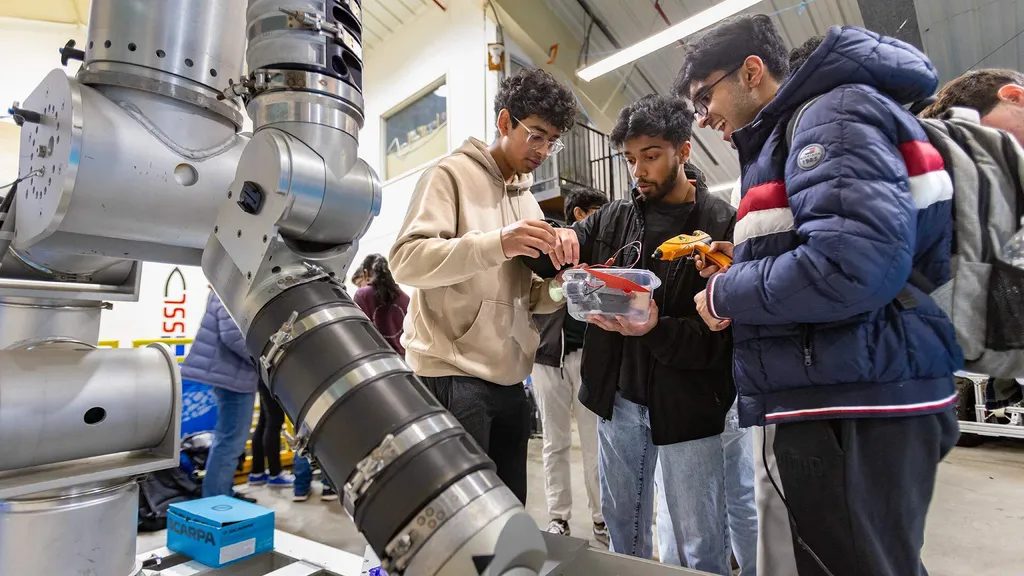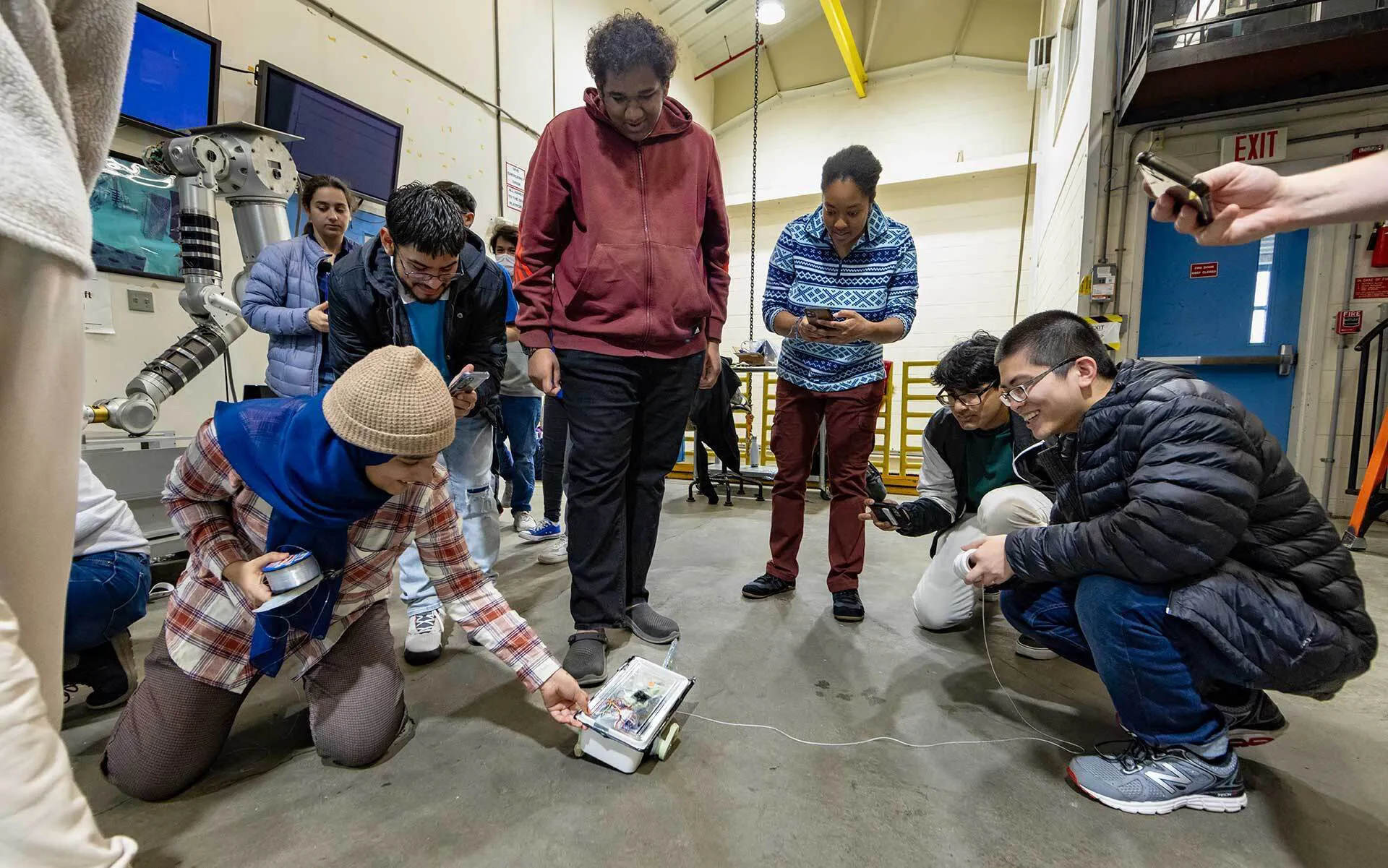- December 08, 2023
- By Maggie Haslam
The fish was floundering. Bobbing precariously at the edge of University of Maryland’s neutral buoyancy tank, a robotic catfish struggled to swim as the students coaxed its motor. The device should have been cruising along the surface of the 367,000-gallon pool; but despite countless tests, hours and design reboots, something had gone very wrong.
That’s sort of the point, said Assistant Clinical Professor Lena Johnson ’14, M.S. ’16, Ph.D. ’22.
“The creative process is all about iteration; that’s how everything gets better,” she said. “But also, it’s going to fail. Sometimes that’s the goal. And everyone needs practice with that.”
The project, which challenged student teams to design and build a bio-inspired robot that could address an environmental challenge, such as sucking up microplastics from the Chesapeake Bay, is the students’ introduction into research at the University of Maryland, and a crash course in trial and error. Called Bio-Inspired Robotics, it’s the newest research group, or “stream,” offered through the University of Maryland’s First-Year Innovation & Research Experience (FIRE), an undergraduate program that immerses students in collaborative projects that accelerate career readiness and opportunity.
Building a robot from scratch is an exercise in creativity, logistics and careful planning—building one that works, as Johnson teaches her students, is about leveraging your failures. Surrounded by dog-eared pages of sketches and formulas, teams worked to hone their designs and “break them,” said Johnson. The gap between an idea and the physical manifestation can be yawning, as students discovered when testing early prototypes. Gears that grind. Waterproof casings that are anything but. Propellers that won’t propel.

In the months leading up to Tuesday’s big debut in the tank, students—mostly sophomores in majors ranging from business to computer science—worked feverishly in Johnson’s FIRE lab in the A.V. Williams Building, pivoting between laptops, a 3D printer and mock-up tank no bigger than a kiddie pool.
“We all learned the scientific method and the process of testing, but really only in theory,” said computer science major Neha Veeragandham ’26, whose team was attempting a water-filled bladder for its robot meant to regulate depth control, similar to a tuna. “So today, our stuff didn’t work and we have to redo everything. But that’s part of the process and something to take away.”
Bio-inspired robotics take its cues from nature, reflected in
materials, behavior, communication and structure. As a student at
Maryland, Johnson worked on Robo Raven, a robot bird with independently
flapping wings, and was behind UMD’s first robotic turtle, designed for
wildlife monitoring.
While this year’s group is working on the mechanics of movement, future cohorts will evolve their work and add functionality, such as suctioning algae from water surfaces or corralling oil plumes. Eventually Johnson plans to have students test robots in places like the Chesapeake Bay. Because FIRE is designed to keep on a few students from the previous cohort as student mentors, the research can advance year after year.
In addition to Johnson’s bio-inspired robotics, FIRE offers 15 other faculty-mentored research streams in a broad range of disciplines, including the natural, social, computational and applied sciences and humanities. Part of the new Office of Undergraduate Research (OUR), FIRE is designed to develop critical thinking, communication and collaborative skills while producing lasting gains in self-efficacy and confidence, said Director of OUR and FIRE Patrick/Patricia Killion.
“Students come to understand that the very nature of hard work is iteration through challenge and uncertainty about the outcomes that will result,” they said. “And, to be clear, the results are sometimes complete and total failure. But they emerge stronger, more connected to their sense of purpose, and more resilient to the challenges ahead.”
Back at the pool, one team’s stingray-inspired robot was able to move water through its belly (which, in future iterations, will filter it), while another team broke into cheers as its robot scuttled across the water—until one of the propellers seized, sending it careening in circles.
“There are going to be roadblocks,” said computer science major Jimmy Garcia ’26. “But that just forces you to go back and think about it more deeply and try something else.”

